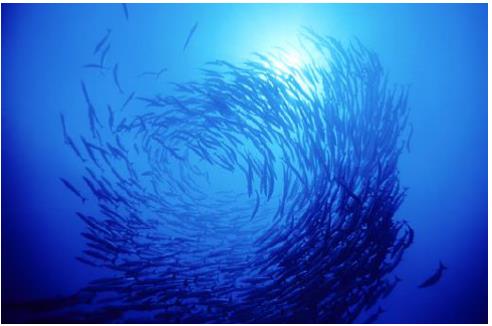
Clément Sire
Clément Sire, a theoretical physicist, has worked on condensed matter physics (quasicrystals, superconductivity...) and out of equilibrium statistical physics (magnetic systems, phase separation, soap froth...). In the past ten years, he has been applying the methods and tools of statistical physics to understand competitive systems (sports, poker tournaments...) and collective phenomena in animal and human groups, in particular, in collaboration with Guy Theraulaz' group.
Social interactions and collective states in fish schools

The flexible coordination of individuals motion ensures rapid and coherent changes in direction of travel of fish schools, for instance, as a reaction to a predator detected in the neighborhood. However the "microscopic level" interaction rules involved in the coordination of fish movements and the adapted collective response of a school still remain to a large extent unknown. I will present a systematic methodology to measure and analyze social interactions controlling the collective motion of animal groups. Contrary to classical forces between physical objects, social interactions between individuals explicitly depend on their relative headings and are affected by their anisotropic and asymmetric perception of their environment. Hence, they strongly break the Newtonian’s law of action-reaction. When applied to fish groups, this approach leads to the quantitative measurement of the spontaneous behavior of a fish, of its avoidance interaction with the tank walls, and of its attraction and alignment interaction with another fish. We use the results of this analysis to build an explicit and faithful model that convincingly reproduces quantitative and qualitative features of the actual fish dynamics. We also show that the type of models derived from such analysis reproduces the main collective states observed in actual fish schools, when one varies the intensity of the alignment and attraction interactions between fish.